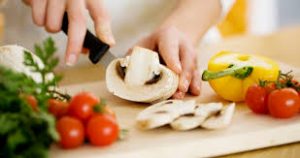Food Contamination
Food contamination is a commonly used term. However, only a few people are aware of the exact reasons for food contamination and its effects on your health. When food items are not handled or cooked safely, the disease-causing organisms such as bacteria, parasites, and viruses result in food contamination. The disease-causing parasites produce toxins that may also lead to food intoxication. In addition, the presence of pesticides, certain cleaning compounds, contaminate the food. The common reasons for food contamination are:
- Improper storing, handling and preparing food
- Improperly cleaned or sanitized utensils
- Contamination by flies, cockroaches, insects, and pests
Different Types of Food Contamination
There are a number of reasons that can lead to food contamination. However, food contamination falls under four different categories which are:
- Biological contamination
- Chemical contamination
- Physical contamination
- Cross-contamination
Biological Contamination

Biological contamination is one of the common causes of food poisoning as well as spoilage. Contamination of food items by other living organisms is known as biological food contamination. During biological contamination, the harmful bacteria spread on foods that you consume. Even a single bacterium can multiply very quickly when they find ideal growth conditions. Not just bacteria, but also their process of multiplying can be quite harmful to humans. The common places where you can find bacteria are:
- Dust
- Raw meat
- The air
- The human body
- Pets and pests
- Kitchen clothes
The best way to avoid food contamination is by washing the food items with KENT vegetable and fruit cleaner and wash the kitchen cloths on a regular basis.
Physical Contamination

When harmful objects contaminate the food it leads to physical contamination. At times, food items can have both physical and biological contamination. Some of the safety tips that you can follow when handling food items to prevent food contamination are:
- Hair-Tie your hair when handling food
- Glass or Metal-Clean away cracked or broken crockery and utensils to avoid contamination
- Dirt-Wash fruits and vegetables with KENT Vegetable and Fruit Cleaner to remove dirt
- Jewelry-Wear minimum jewelry when preparing food
Chemical Contamination

Chemical contaminants are one of the serious sources of food contamination. These contaminants can also lead to food poisoning. Pesticides present in fruits and vegetables are one of the main sources of contamination. In addition, kitchen cleaning agents, food containers made of non-safe plastic, pest control products also lead to food contamination. Though we make it a point to wash fruits and vegetables thoroughly, however, plain water can’t remove all the contaminants. This is where KENT Vegetable and Fruit Disinfectant can help you out. The smart kitchen appliance uses ozone disinfection technology that removes contaminants from the surface of the fruits and vegetables to make it safe for consumption.
Comments
Post a Comment